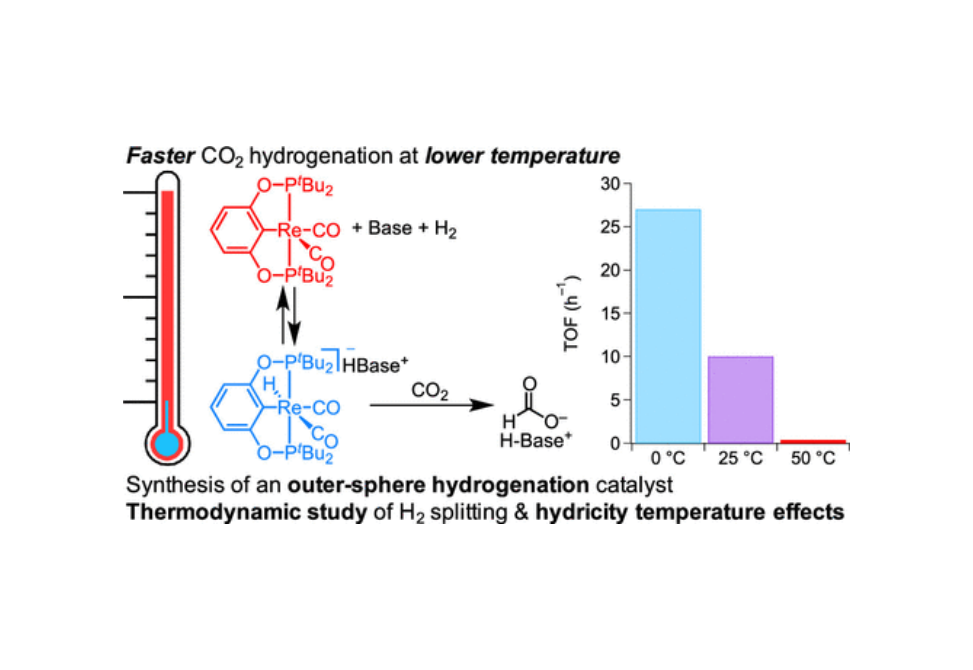Temperature and Solvent Effects on H-2 Splitting and Hydricity: Ramifications on CO2 Hydrogenation by a Rhenium Pincer Catalyst
Abstract
The catalytic hydrogenation of carbon dioxide holds immense promise for applications in sustainable fuel synthesis and hydrogen storage. Mechanistic studies that connect thermodynamic parameters with the kinetics of catalysis can provide new understanding and guide predictive design of improved catalysts. Reported here are thermochemical and kinetic analyses of a new pincer-ligated rhenium complex (tBuPOCOP)Re(CO)2 (tBuPOCOP = 2,6-bis(di-tert-butylphosphinito)phenyl) that catalyzes CO2 hydrogenation to formate with faster rates at lower temperatures. Because the catalyst follows the prototypical “outer sphere” hydrogenation mechanism, comprehensive studies of temperature and solvent effects on the H2 splitting and hydride transfer steps are expected to be relevant to many other catalysts. Strikingly large entropy associated with cleavage of H2 results in a strong temperature dependence on the concentration of [(tBuPOCOP)Re(CO)2H]− present during catalysis, which is further impacted by changing the solvent from toluene to tetrahydrofuran to acetonitrile. New methods for determining the hydricity of metal hydrides and formate at temperatures other than 298 K are developed, providing insight into how temperature can influence the favorability of hydride transfer during catalysis. These thermochemical insights guided the selection of conditions for CO2 hydrogenation to formate with high activity (up to 364 h–1 at 1 atm or 3330 h–1 at 20 atm of 1:1 H2:CO2). In cases where hydride transfer is the highest individual kinetic barrier, entropic contributions to outer sphere H2 splitting lead to a unique temperature dependence: catalytic activity increases as temperature decreases in tetrahydrofuran (200-fold increase upon cooling from 50 to 0 °C) and toluene (4-fold increase upon cooling from 100 to 50 °C). Ramifications on catalyst structure–function relationships are discussed, including comparisons between “outer sphere” mechanisms and “metal–ligand cooperation” mechanisms.
Citation
Temperature and Solvent Effects on H2 Splitting and Hydricity: Ramifications on CO2 Hydrogenation by a Rhenium Pincer Catalyst
Jenny Hu, Quinton J. Bruch, and Alexander J. M. Miller
Journal of the American Chemical Society 2021 143 (2), 945-954
DOI: 10.1021/jacs.0c11110


